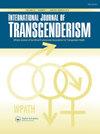Gender variance in children and adolescents with autism spectrum disorder from the National Database for Autism Research
Q1 Social Sciences
引用次数: 47
Abstract
ABSTRACT Previous studies suggest elevated rates of gender variance (GV), the wish to be of the other gender, in those with autism spectrum disorder (ASD). This study aimed to understand the rate of GV in children and adolescents with ASD and explore differences in sex, age, and emotional-behavioral problems relative to those referred to clinical services for mental health concerns (“referred”) and to the general population (“non-referred”). A secondary analysis of data from the National Database for Autism Research was used to explore GV using a child behavior checklist, parent report, in 176 children aged 6 to 18 year with ASD compared to referred and non-referred cohorts. GV was present in 4.0% of the ASD group, higher than for the non-referred group (0.7%) but similar to the referred group (4.0%). There were no significant sex differences in GV prevalence (males 3.7%, females 6.0%) in the ASD group. That the GV rate was elevated in ASD relative to non-referred samples but similar to clinically referred samples suggests that elevated rates of GV were not specific to ASD and may be more broadly associated with neurodevelopmental and psychiatric disorders of childhood. Further population-based research using clinical assessment for gender dysphoria is required in individuals with ASD and other neurodevelopmental disorders.自闭症研究国家数据库中自闭症谱系障碍儿童和青少年的性别差异
先前的研究表明,在自闭症谱系障碍(ASD)患者中,性别变异(GV)的发生率升高,即希望成为另一种性别。本研究旨在了解自闭症儿童和青少年的GV发生率,并探讨性别、年龄和情感行为问题的差异,这些问题相对于那些因心理健康问题而就诊的儿童和青少年(“转诊”)和一般人群(“非转诊”)而言。对来自国家自闭症研究数据库的数据进行二次分析,利用儿童行为检查表和家长报告,对176名6至18岁的自闭症儿童进行了GV研究,并将其与转诊组和未转诊组进行了比较。4.0%的ASD组存在GV,高于未转诊组(0.7%),但与转诊组(4.0%)相似。在ASD组中,GV患病率没有显著的性别差异(男性3.7%,女性6.0%)。与非参考样本相比,ASD组的GV率升高,但与临床参考样本相似,这表明GV率升高并非ASD所特有,可能与儿童神经发育和精神疾病有更广泛的联系。需要在ASD和其他神经发育障碍患者中进一步开展基于人群的性别焦虑临床评估研究。
本文章由计算机程序翻译,如有差异,请以英文原文为准。
求助全文
约1分钟内获得全文
求助全文
来源期刊

International Journal of Transgenderism
Social Sciences-Gender Studies
CiteScore
5.10
自引率
0.00%
发文量
0
期刊介绍:
International Journal of Transgenderism, together with its partner organization the World Professional Association for Transgender Health (WPATH), offers an international, multidisciplinary scholarly forum for publication in the field of transgender health in its broadest sense for academics, practitioners, policy makers, and the general population.
The journal welcomes contributions from a range of disciplines, such as:
Endocrinology
Surgery
Obstetrics and Gynaecology
Psychiatry
Psychology
Speech and language therapy
Sexual medicine
Sexology
Family therapy
Public health
Sociology
Counselling
Law
Medical ethics.
 求助内容:
求助内容: 应助结果提醒方式:
应助结果提醒方式:


